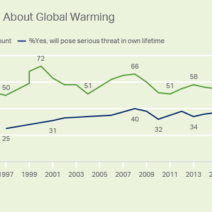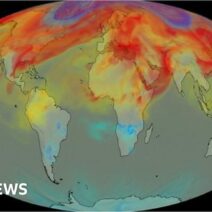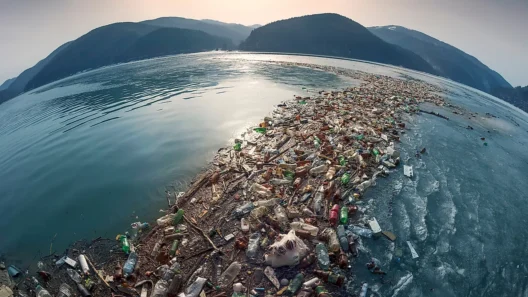In recent years, the terms “climate change” and “global warming” have become ubiquitous in discussions surrounding environmental issues. Yet, there remains a pervasive misunderstanding of what each term actually signifies. This article seeks to elucidate the distinctions between these two critical concepts, while also highlighting their interrelationships and collective implications for our planet.
To begin with, it’s imperative to define both terms. Global warming refers specifically to the long-term rise in Earth’s average surface temperature due to human activities, particularly the emission of greenhouse gases. This phenomenon is primarily driven by the burning of fossil fuels, deforestation, and industrial processes that release carbon dioxide (CO2) and other heat-trapping gases into the atmosphere. The repercussions of this temperature rise are profound, disrupting natural ecosystems and altering weather patterns.
On the other hand, climate change encompasses a broader spectrum of alterations in climate patterns, beyond mere temperature fluctuations. It includes shifts in precipitation patterns, increased frequency and intensity of extreme weather events, rising sea levels, and alterations in seasonal weather phenomena. While global warming is a significant driver of climate change, it is not the sole factor. Natural phenomena, such as volcanic eruptions and solar radiation variations, also contribute to the Earth’s climatic fluctuations.
The conflation of the two has led to misinterpretations that can undermine environmental advocacy. By narrowly focusing on global warming, one might overlook the complex ramifications that climate change entails. For example, while global warming signals an increase in average temperatures, climate change captures the full range of ecological disruptions that accompany this trend, including effects on biodiversity, agricultural productivity, and human health. Consequently, addressing climate change necessitates a multifaceted approach that not only mitigates greenhouse gas emissions but also fosters adaptation strategies for communities vulnerable to its impacts.
Delving deeper into the causal nexus, it’s crucial to understand how human activities catalyze both global warming and climate change. Carbon dioxide, methane, and nitrous oxide are among the principal greenhouse gases. Their increased concentrations have created an enhanced greenhouse effect, which serves to retain more heat within the atmosphere. This mechanism is akin to a blanket that keeps the Earth warm; however, an overabundance of this blanket can lead to debilitating overheating, resulting in catastrophic consequences.
The implications of this reality cannot be overstated. Marine life, for example, confronts existential threats as ocean temperatures rise and acidity increases from absorbed CO2. Coral reefs, often dubbed the “rainforests of the sea,” face bleaching events that devastate biodiversity. Land ecosystems are equally vulnerable—droughts and floods become more prevalent, displacing numerous species and derailing agricultural cycles. Farmers find themselves grappling with unpredictable growing seasons, leading to food insecurity in regions already under strain.
Moreover, the societal ramifications of climate change extend into the realms of health, economics, and political stability. Heatwaves have been linked to increased mortality rates, particularly in vulnerable populations such as the elderly and those with pre-existing health conditions. Economically, sectors reliant on stable weather patterns, such as agriculture and tourism, face heightened risks, which can exacerbate inequalities and lead to geopolitical tensions as resource availability decreases.
In light of these extensive ramifications, a robust discourse surrounding mitigation and adaptation strategies is essential. Transitioning to renewable energy sources, implementing sustainable agricultural practices, and enhancing urban resilience are crucial steps. The deployment of technologies such as carbon capture and storage (CCS) can also play a pivotal role in addressing greenhouse gas emissions. However, technology alone is insufficient; widespread behavioral and policy changes must also occur to combat the looming threats posed by climate change.
In conclusion, understanding the nuanced differences between climate change and global warming is vital for fostering informed dialogue and effective action. While global warming serves as a driving force behind climate change, the latter represents a broader array of environmental transformations that have far-reaching consequences for our planet. Humanity stands at a critical juncture, where decisions made today will reverberate through future generations.
By cultivating awareness and promoting proactive strategies to address both global warming and climate change, we can mitigate the existential threats they pose. It is imperative to approach these intertwined issues with urgency and determination. Collective action is essential, bridging the gap between scientific understanding and public policy, to foster a sustainable future for the Earth and its inhabitants.



